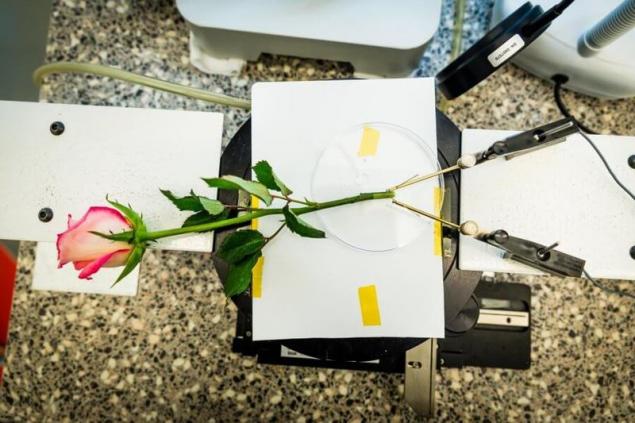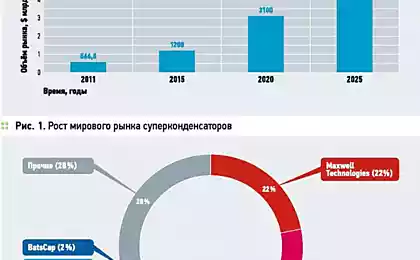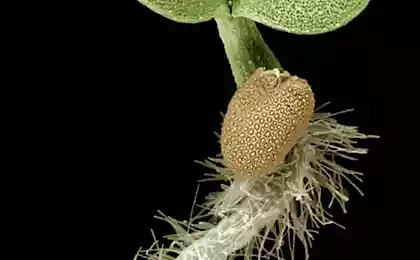439
Power and supercapacitors to create right inside of live plants
In 2015, a group of researchers from Sweden have managed to enter inside the living roses special conductive material. Spreading through the plant, this material is cured and formed the finest electrical conductors, and by adding in certain areas additional components, scientists were able to create in the plant a fully functional transistor.
Work in this direction was continued by the group of Professor Roger Gabrielson (Roger Gabrielsson), which managed to modify and improve used in early materials. Now this material is able to penetrate all the plant, forming a conductive filament not only in the stem but also in other areas of the plant, in leaves, petals and roots.

"We managed to introduce a new composition in one and the same plant many times. And this does not hurt either the plant itself or the functionality created in electronic circuits. In this way we managed to create an analogue of the supercapacitor, which is charged with an ionic "pump" that the purpose of photosynthesis and other natural processes occurring in the plant," says Eleni, Stavrinidou (Eleni Stavrinidou), a scientist from the laboratory of organic electronics, "the Energy produced by a single plant, of course, small. But it is enough for activating various sensors, for example."
These studies open up new prospects for the use of plants for their own purposes. It is likely that in the future, fields planted with "e" plants will become a kind of green living plants and some additional components that may be created in the future, will be the basis for biological fuel cell and turn plants into "factories" that produce liquid biofuels.

"Several years ago we demonstrated that the creation of electronic plants is quite affordable. Now we were able to show the perspective of the first practical applications of such plants," says Professor Magnus Berggren (Magnus Berggren), — "we Implemented technologies of collection and energy storage can turn plants into living quite efficient plants and in biological systems of other types, which can be made to work for the benefit of mankind". published
P. S. And remember, only by changing their consumption — together we change the world! ©
Source: ecotechnology
Work in this direction was continued by the group of Professor Roger Gabrielson (Roger Gabrielsson), which managed to modify and improve used in early materials. Now this material is able to penetrate all the plant, forming a conductive filament not only in the stem but also in other areas of the plant, in leaves, petals and roots.

"We managed to introduce a new composition in one and the same plant many times. And this does not hurt either the plant itself or the functionality created in electronic circuits. In this way we managed to create an analogue of the supercapacitor, which is charged with an ionic "pump" that the purpose of photosynthesis and other natural processes occurring in the plant," says Eleni, Stavrinidou (Eleni Stavrinidou), a scientist from the laboratory of organic electronics, "the Energy produced by a single plant, of course, small. But it is enough for activating various sensors, for example."
These studies open up new prospects for the use of plants for their own purposes. It is likely that in the future, fields planted with "e" plants will become a kind of green living plants and some additional components that may be created in the future, will be the basis for biological fuel cell and turn plants into "factories" that produce liquid biofuels.

"Several years ago we demonstrated that the creation of electronic plants is quite affordable. Now we were able to show the perspective of the first practical applications of such plants," says Professor Magnus Berggren (Magnus Berggren), — "we Implemented technologies of collection and energy storage can turn plants into living quite efficient plants and in biological systems of other types, which can be made to work for the benefit of mankind". published
P. S. And remember, only by changing their consumption — together we change the world! ©
Source: ecotechnology
Mercedes does not see prospects for fuel cell vehicles
Why the new Prius need in this world more than the world to him
















